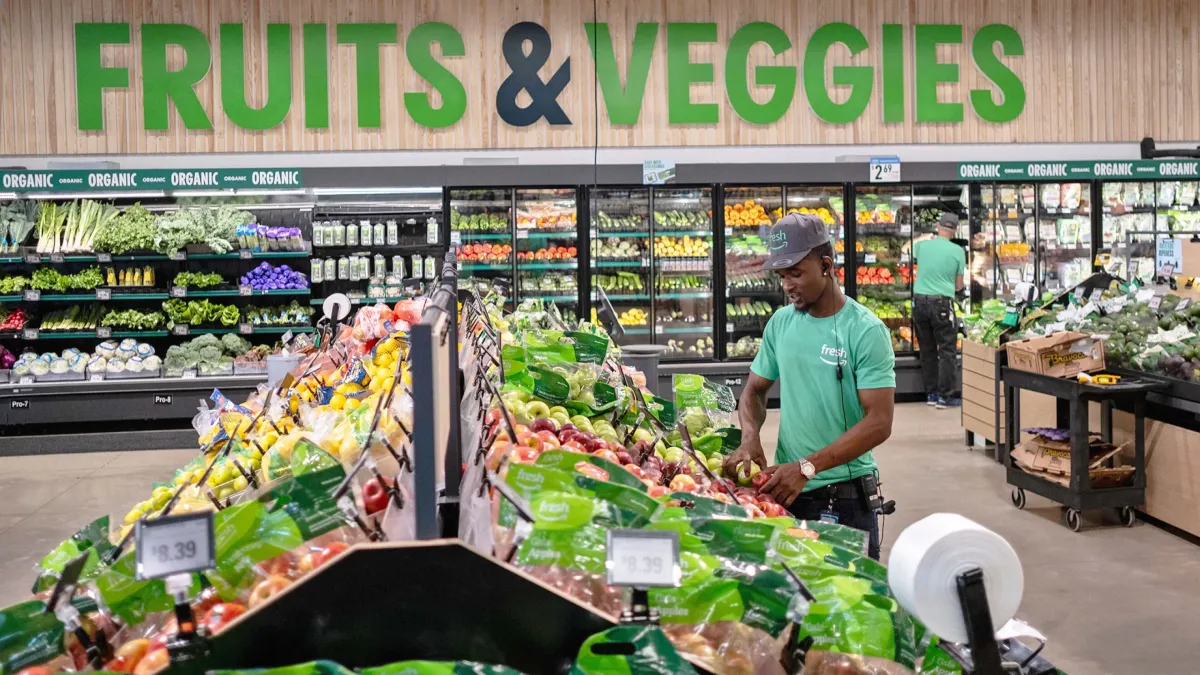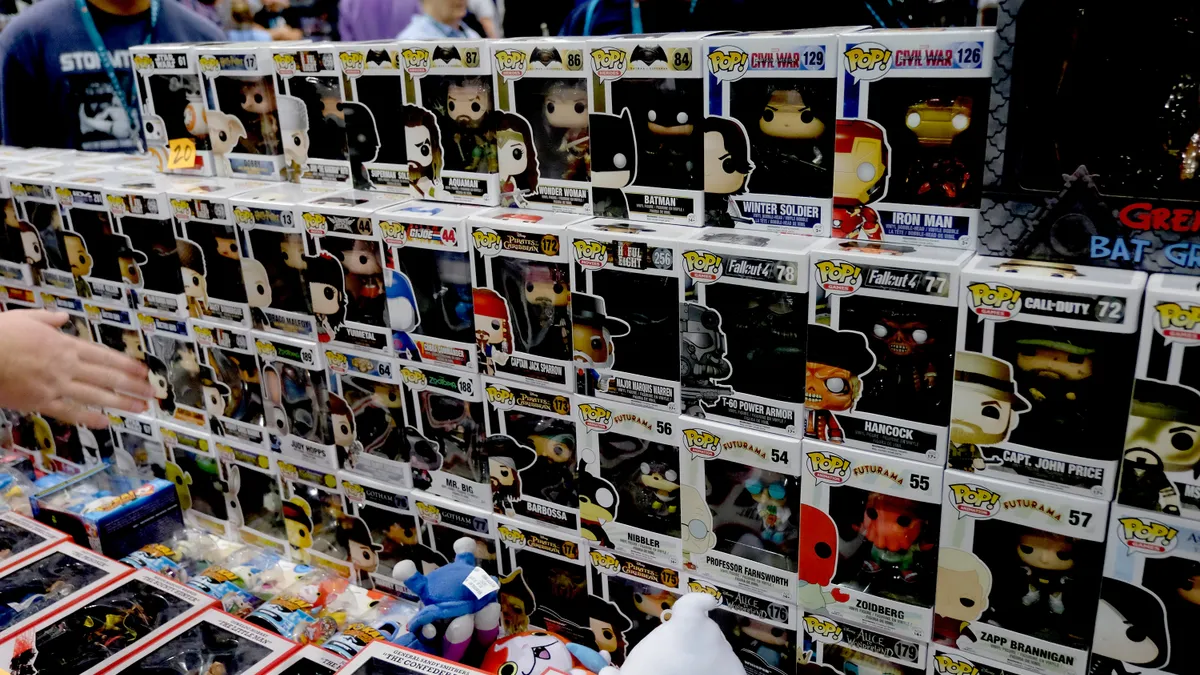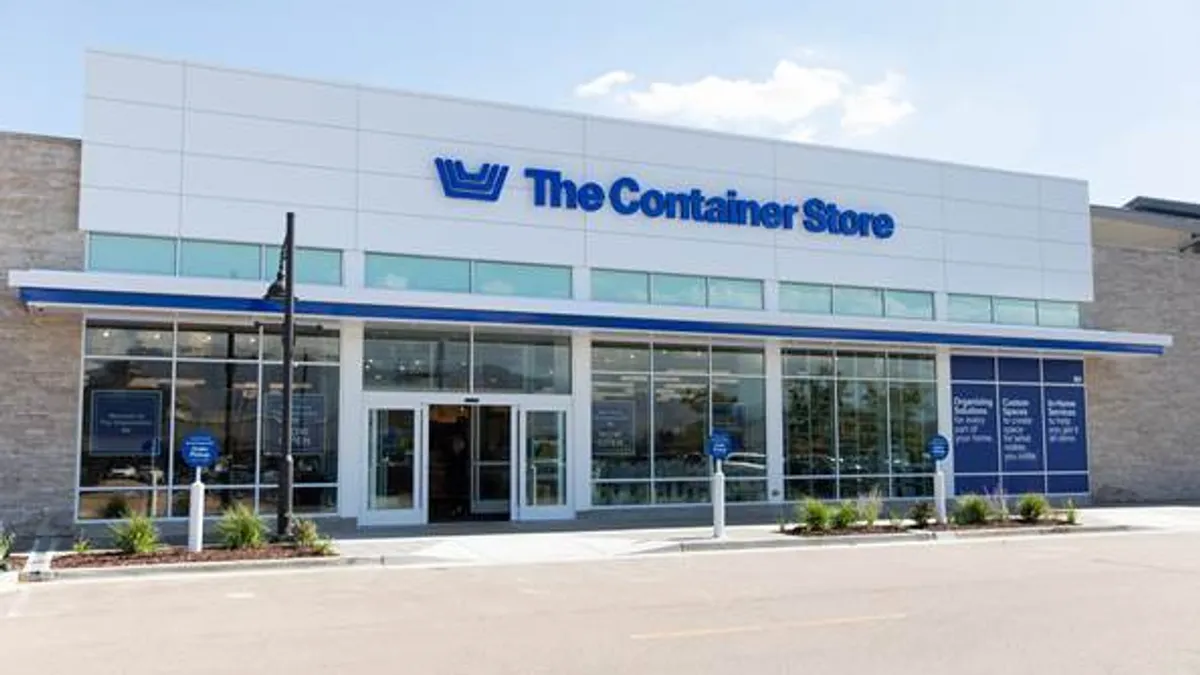Amazon’s grocery ambitions have not gone according to plan. But the company wants consumers and the rest of the industry to know it’s still very serious about disrupting the more than $1 trillion industry.
On Wednesday, the company announced some significant changes to Amazon Fresh, including a refreshed store format and expanded online access that are meant to breathe life into the struggling grocery brand that started as an e-commerce service more than 15 years ago and began opening stores in 2020.
Several months after pausing the rollout of its Amazon Fresh stores due to underperformance, Amazon has completed updates to a pair of Chicago-area locations that emphasize tried-and-true merchandising tactics over technological wizardry.
The stores, located in Schaumburg and Oak Lawn, Illinois, feature more than 1,500 new products, new department signage, a Krispy Kreme donut shop and merchandising features that are meant to add excitement to locations that consumers and grocery experts both agree have felt dull and undifferentiated. The stores also now feature a few self-checkout stations, in a nod to the fact that shoppers aren’t just captivated by Amazon’s proprietary checkout technology.
At the same time, Amazon is adding new online grocery services aimed at bringing the Fresh name to more households and integrating its various grocery brands, including Whole Foods Market, so that shoppers can put all their items in one cart, Bloomberg reported on Wednesday.
The omnichannel updates constitute a major update for a company that, despite its overwhelming success selling everything from electronics to kitchen appliances, has struggled to get shoppers to regularly buy bread, orange juice, cookies and bananas.
“Our goal is to build a best-in-class grocery shopping experience where Amazon is people’s first choice for selection, value, and convenience. We remain committed to our investment in this space,” an Amazon Fresh spokesperson said in a statement.
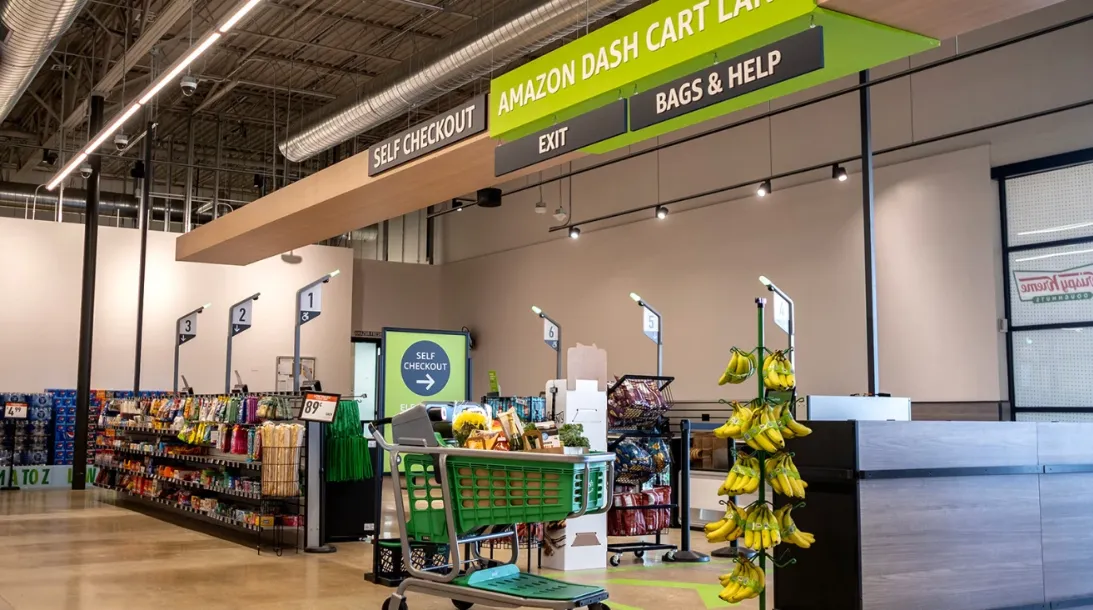
Two Fresh stores get a facelift
When Amazon Fresh stores made their debut in 2020, the focus was on cutting-edge checkout technology, including its frictionless Just Walk Out system and its Dash Carts, and not so much on the rest of the store.
That focus has shifted considerably with the updates to the Chicago-area locations, both of which opened in 2021. The stores have added hundreds of new products, with the largest increases coming in dairy, snacks, home care, health and baking products, according to a Wednesday morning post by Claire Peters, worldwide vice president of Amazon Fresh.
There are new merchandise displays, including a cheese-and-charcuterie fixture and a special cart in the produce department that offers free produce for kids, aimed at livening up the shopping experience.
“Additionally, the store will host several seasonal events with entertainment for the whole family,” Peters noted.
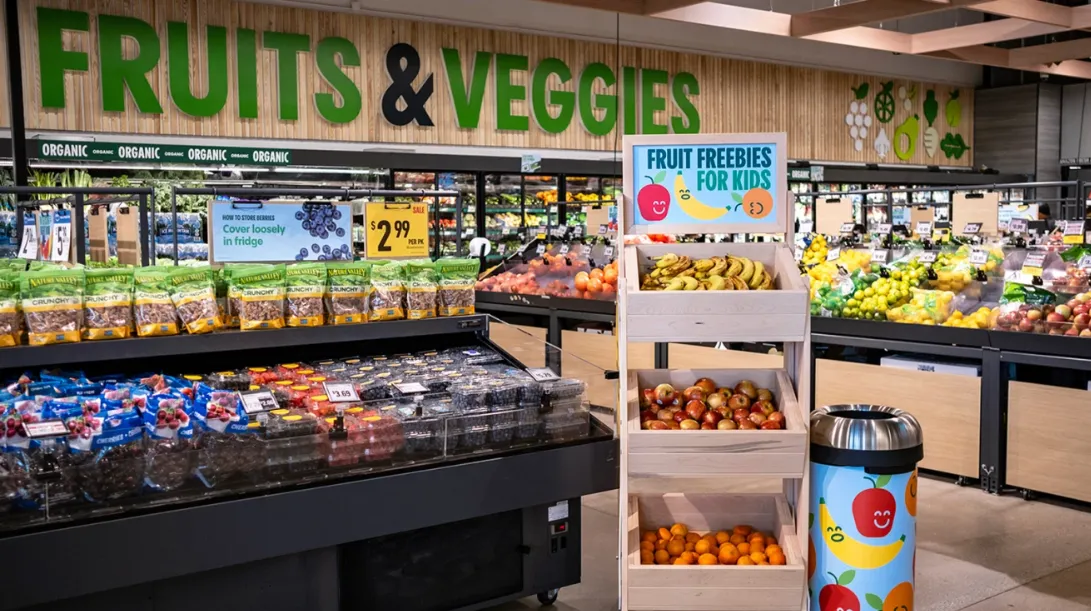
David Bishop, partner with consulting firm Brick Meets Click, has visited the newly updated stores and said they constitute a promising step forward that brings Amazon Fresh in line with traditional grocery shops. In a LinkedIn post on Tuesday, he noted that items in the produce department feel fresher thanks to warmer lighting and new design enhancements like faux-wood accents on displays.
Bishop noted that the stores also have new, more colorful department signage, refreshed pastry cases and more nonfood offerings like home office supplies and pet products. The Krispy Kreme shops, meanwhile, feature a selection of donuts along with hot and cold coffee drinks.
“Ironically, the improvements have less to do with innovative tech, which is important, but rather good, old-fashioned store design and merchandising, which traditional grocers know extremely well,” Bishop noted in his post.
Amazon is currently updating three more Amazon Fresh stores in Southern California, Bloomberg reported on Wednesday. If shoppers respond well to the updates, the publication noted, those changes could roll out across the entire chain of 44 stores.
After rapidly opening new stores in its first three years, Amazon Fresh is now taking time to tweak its stores and right-size operations under new boss Tony Hoggett, who joined the company from British grocer Tesco in 2021. Along with pausing the chain’s rollout last fall, Hoggett and team also recently cut hundreds of store jobs and restructured in-store staffing.
Bloomberg, which interviewed Hoggett for its report, noted that Amazon Fresh is now focusing on its operations in a few core markets, including Illinois, Southern California, Northern Virginia and Washington state.
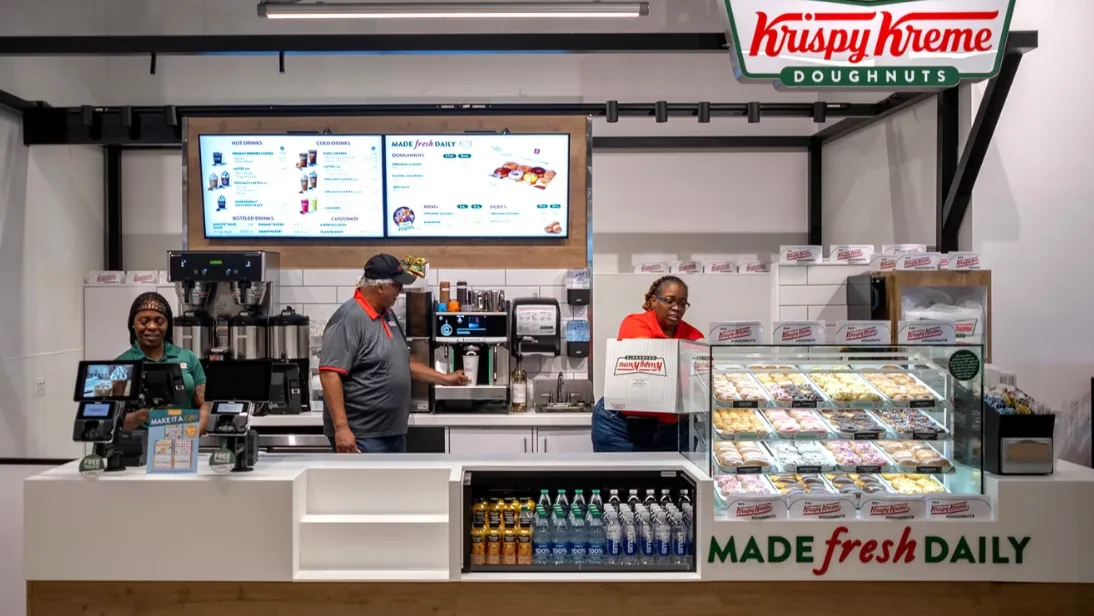
Expanding online access for Fresh
The Amazon Fresh revamp also features a significant change to its core e-commerce service that launched back in 2007 and has expanded to most major U.S. metro areas
Starting Wednesday, shoppers who are not Amazon Prime members can order home delivery through the service in a dozen markets, including Boston, Nashville, San Francisco and Dallas-Fort Worth. Amazon Fresh plans to expand that delivery offering to non-Prime members in more markets in the months to come, according to a company announcement.
The move promises to bring Amazon Fresh groceries into millions more homes — not to mention entice consumers to upgrade to a Prime membership. Delivery fees for non-Prime members start at $13.95 for orders under $50 and go up to $7.95 for orders over $100. That’s a $4 premium over the fees Prime members pay for delivery.
Earlier this year, Amazon Fresh significantly raised its delivery fees, underscoring its focus on turning a profit in e-commerce and driving shoppers to its new stores, where the cost to serve is much lower. Brick Meets Click research shows that Amazon Fresh’s online prices are 13% higher than in-store, Bloomberg noted.
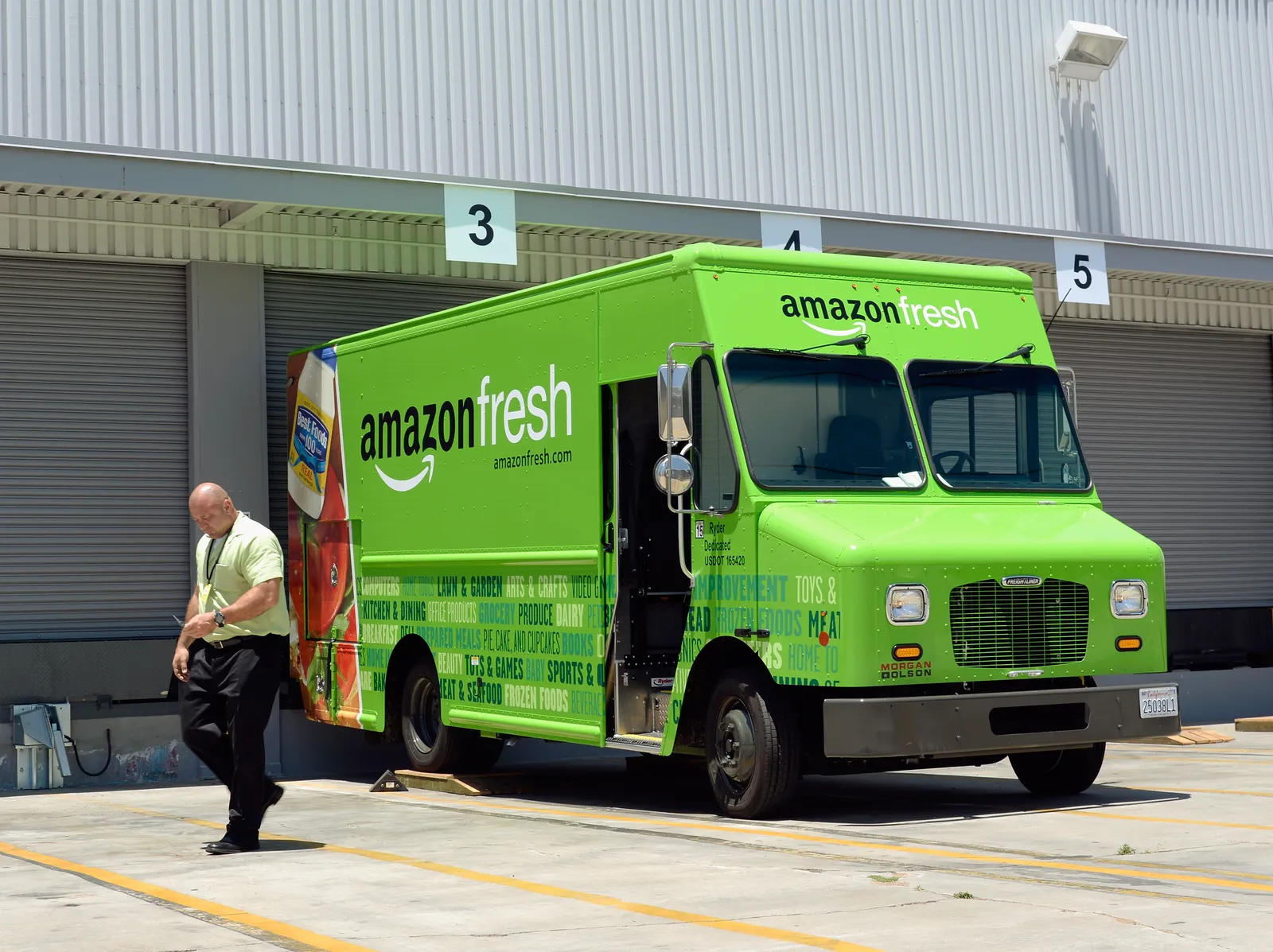
Amazon’s online grocery updates go beyond Fresh. According to Bloomberg’s report, the company is also working on integrating its grocery brands so that shoppers can combine purchases from Whole Foods, Amazon Fresh and Amazon.com into one cart.
This step would solve the frustrations that many shoppers currently have with placing separate orders across the three grocery stops — but they would also require significant updates to Amazon’s distribution systems. Bloomberg noted that the company is working on incorporating more Whole Foods products into Amazon Fresh warehouses and adding refrigerated sections to Amazon’s urban distribution hubs, noting the company expects the updated shopping experience to roll out sometime this year or next year.
Amazon also plans to open a new, fully automated warehouse for grocery products on Long Island, Bloomberg noted.
Amazon’s updates to its stores and e-commerce services underscore its drive to become a destination for grocery shoppers, no matter which channel they choose to shop. Although its plan has not gone smoothly so far, company officials are taking every opportunity, both in official statements and press interviews, to affirm their commitment to succeeding in the industry.
“We’re serious about grocery,” Hoggett told Bloomberg. “Our plan is on building this really strong grocery relationship with customers over time.”



